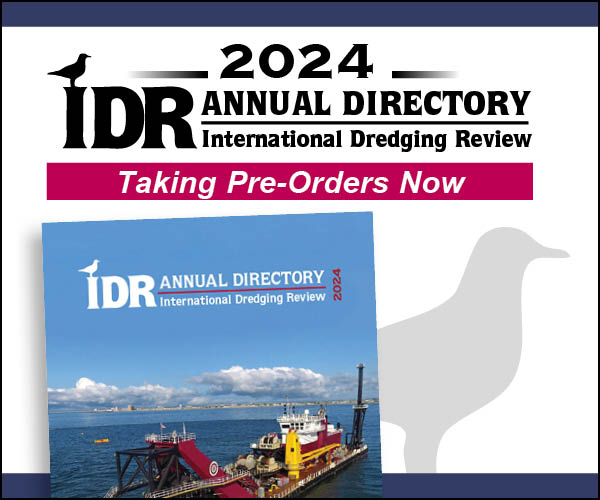Back to Nashville
For WEDA 31/TAMU 42 IDR returns to Nashville where Volume 1 Number 1 was introduced during WEDA II in 1981. The Western Dredging Association has come a long way since “WEDA I” in Kansas City Missouri in September 1979 but the course has been smooth because the founders planned well.
Reading my report in World Dredging on that meeting I see that the Corps Kansas City District and the WEDA Midwest Chapter hosted the event that Lou Mathews was president and
led the meeting; George Watts was executive secretary and did most of the planning; Eric Seagren was host as president of the Midwest Chapter; and Bill Allcock of the Kansas City District was co-host. Bill Murden was chairman
and also chief of the new Corps Plant & Supply branch housed in “pre-engineered buildings” at Fort Belvoir.
The cocktail party was dubbed “Intake of Ballast Discharge of Residue” proving that the group was not all work and no play.
That November the 12th annual TAMU dredging seminar was held in Houston. It would be four more years before the two events joined forces.
One of WEDA’s best moves over the years was to abandon Roman numerals so as the years go on we won’t have to be Latin scholars to know where we are.
This year the luncheon speaker on Tuesday is a representative from Conrad Industries speaking on the Dredge Murden being built at Conrad. For all who knew Bill Murden it is heartwarming news that this new dredge will be
named after him. Bill and Dottie Murden were valuable colleagues and very good friends to IDR. They are both gone now but not forgotten. Our late friend George Waldeck suggested once that a new dredge be named the Murden
with a support vessel named the Dottie M. and I would like to see that. Dottie had her own successful career outside the dredging industry but was also Bill’s loving supporter.
As we prepare this issue the Mississippi River is experiencing a catastrophic flood. During the week of May 9 I asked colleagues in Vicksburg Baton Rouge and New Orleans to send me pictures of the river in their locations
and they are published in this issue on pages 31 and 35. They have agreed to take follow-up pictures on the day the river crests in those locations which I’ll print in the next issue.
Meanwhile the Corps opened the Morganza Spillway on May 15 at mile 280 to divert some of the water into the Atchafalaya Basin. Water is expected to rise to 20 feet in some populated areas of the basin and residents have evacuated.
This spillway built in 1954 is one of the flood control methods conceived by the Waterways Experiment Station (WES). My short article on the 1927 flood and the founding of WES is on page 35 along with KC Clark’s photo of the
river in New Orleans on May 12.
River control methods are in place to control flooding and especially to keep the river from cutting new channels. After the river goes down it will be time to repair the authorized channels and for that extra funding will be needed. Sean Duffy outlines this problem well on behalf of
the Big River Coalition page 34 of this issue.
I attended the CONEXPO/CON-AGG show in Las Vegas in March and came away with too many pictures and too much interesting information to fit into this issue so that report will appear in the July/August issue. Larry Patella was there with the WEDA booth giving a base for members
and a location where aggregate producers interested in dredging can get information and contacts. WEDA members Ray Bergeron and Harry Steves and I helped man the booth.
A highlight for me was a diverting visit to the top of the Stratosphere with Nancy and Larry Patella where the wind threatened to blow us over and the bungee jumping operation had to be shut down.
WEDA accomplishes a lot but we still make time for a little fun at the end of the day.
Have a good show!
Judith Powers
Editor



